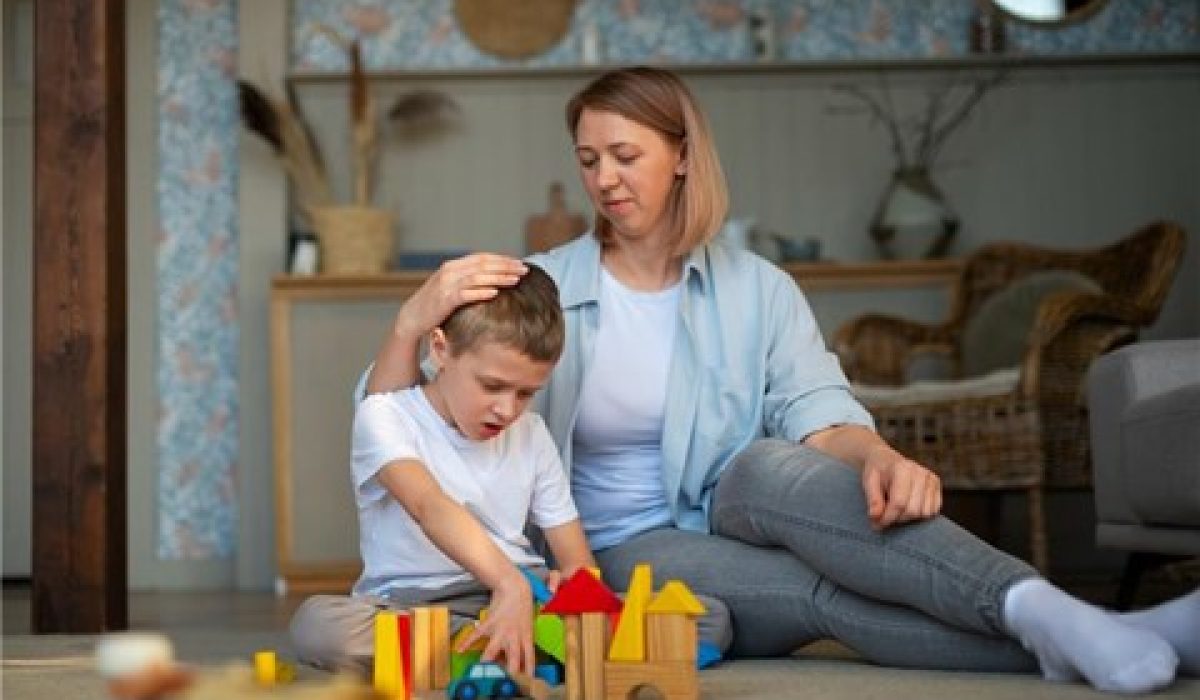What is autism spectrum disorder?
Autism spectrum disorder, or simply Autism, is a developmental disorder or a disability caused by differences in the brain.
It is a neurological and developmental disorder that affects the person’s ability to interact and communicate with others and causes learning and behavior problems.
People with autism face trouble communicating what they want, which makes it difficult to express themselves with words, gestures, facial expressions, or touch.
They also face difficulty understanding what other people think or feel and learning things.
However, the abilities of people with autism vary significantly from person to person.
Common Symptoms of Autism
Symptoms of autism usually appear around the age of 3 years. Some people may show signs from birth.
The common symptoms to detect autism in children include:
- Lack of eye contact
- Lack of interest in activities
- Low interest or intense interest in specific topics
- Doing things repeatedly, like repeating words or playing back and forth.
- High sensitivity to sounds, touches, smells, or sights
- Not wanting to be held or cuddled
- Problems understanding
- Unusual behavior
- Difficulty communicating through speech, gestures, facial expressions, or tone of voice
- Trouble adapting to changes
In some cases, people with autism may also have seizures.
Understanding the Three Levels of Autism
There are three levels of autism- level 1, level 2, or level 3, depending on the severity and how much support they need daily.
Level 1: Requires Support
It is the mildest form of autism that is expected. These children usually can speak and communicate but face difficulty engaging in back-and-forth conversations with others. They may also need help moving from one activity to another and organizing or planning, which may prevent them from being independent.
Level 2: Requires Substantial Support
These children will have more problems communicating with others, tend to have narrow interests, and engage in repetitive behaviors.
Level 3: Requires Complete Substantial Support
These children will have the same behaviors (levels 1 and 2) but to a greater extent. Problems expressing themselves verbally and nonverbally can make it challenging to interact socially.
Causes and Risk Factors of Autism
The exact cause of Autism is Unknown.
Some studies suggest that a person’s genes and other environmental aspects can affect development.
Other factors include:
- Sibling with Autism
- Older parents
- Certain genetic conditions
- Low birth weight
Certain drugs or chemicals like alcohol during pregnancy can also affect the baby’s growth.
Diagnostic Criteria for Autism
It is hard to get a definite diagnosis of autism. The doctor will focus on the behavior and development of the child in two steps.
- Developmental Screening: This helps track the child’s basic skills like learning, speaking, behavior, and moving. It is suggested to get a child’s developmental screening during their regular checkups at 18th-month and 24th-months.
- Complete evaluation: If your child shows any specific symptoms where the doctor suspects autism, you will need further evaluation, which might include hearing tests, vision tests, or genetic tests. Some doctors also suggest Autism Diagnostic Observation Schedule (ADOS).
Treatment Criteria for Autism
There are several effective interventions to help improve your child’s functioning and development:
Applied behavioral Analysis (ABA): This therapy involves many programs to help address a wide range of social, language, and behavioral difficulties, which include-
- Learning new skills
- Communicating better with others
- Improving adaptive skills
- Decreasing inappropriate behavior
Family Therapies: This includes training the parents to learn how to interact with their children, to help them interact with others and teach daily living skills and communication.
Educational therapies: Children with autism respond well to highly structured educational programs, which include a team of specialists with various activities to improve social skills, communication, and behavior.
Other Therapies: Depending on the needs and level of autism in the child, different therapies like social skills training, speech, and language therapy, music therapy, occupational therapy, and physical therapy may be beneficial.
Medication: The doctor will evaluate for co-morbid depression, anxiety, and impulsivity and prescribe appropriate remedies that can be helpful.
Complementary and alternative therapies include special diets and supplements that help a child with autism function better.
Tips For Parents
- Learn about autism and related symptoms
- Provide your child with a consistent structure and daily routine
- Connect with your children and provide them with comfort and confidence
- Take time for your child and help them socialize with others
- Pay attention to the physical and emotional health of your child
- Seek medical help for specific concerns
Autism and Exercise
Any type of exercise your child enjoys or likes is beneficial.
- Simple exercises like walking and having fun in the playground are also helpful.
- Sensory play activities, swimming, and other water games serve as exercise.
- Full-body exercises are best for autistic kids to increase coordination, strength, endurance, and body awareness.
Myths and Facts on Autism
Myth: People with autism cannot communicate or form relationships with others
Fact: Although social interaction is impaired in children with autism. Individuals with autism can and do have relationships with family and friends.
Myth: Vaccines Cause Autism
Fact: There is no evidence to support a link between vaccines and Autism
Is Bad Parenting a Reason for Autism in Children?
NO, Autism is a neurological and developmental disorder. There is clear evidence that autism is not caused by bad parenting but caused due to differences in the way the brain develops before the child is born.

